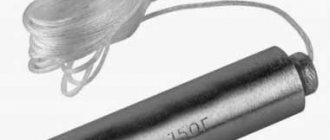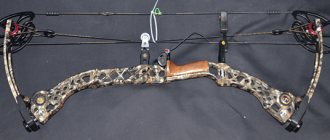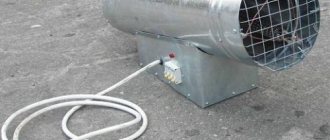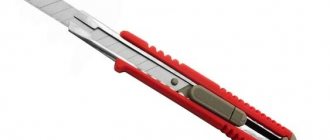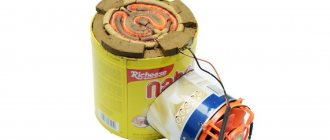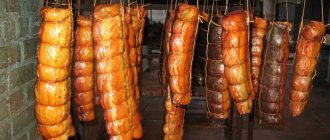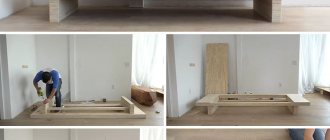Just a few decades ago, owners of country houses and summer cottages spent their leisure time in the fresh air, tending vegetables in their own gardens. With the advent of fashion for recreation areas with green lawns, many are sure to devote part of the garden or local area to arranging such areas where they can cook barbecue, splash in the pool, sunbathe in the sun on a sun lounger, or just have a good time with friends or family.
To make the grass on your lawn look beautiful and thick, you need to sow it correctly. For high-quality sowing, it is better to use a special seeder.
What it is?
A lawn seeder is a manual or mechanical device that not only facilitates and speeds up the process of scattering seeds over the area, but also allows them to be evenly distributed over the entire area.
Hand sowing of grass is not very convenient and can cause uneven entries: in some places the grass may grow too thick, while in others bald spots often form.
Design Features
There are various designs, but the main elements are:
- frame;
- container for seeds;
- opener, with the help of which furrows are formed;
- mechanism for feeding seeds into the seed tube.
Some models also come with a built-in dispenser that allows you to adjust the amount of seed dispensed.
Features of application
The basic principle of operation of the simplest sowing mechanism is to limit the spilling of seeds out. An open box with a double good bottom is used for this procedure. A movable plate is inserted into the formed space.
Grains or seeds are poured into the bottom of the box (upper) with holes slightly larger than the size of the planting material; in the lower tier of the mechanism there are larger holes, they coincide with the top. When pushing in the middle intermediate plate, the holes in the bottoms do not communicate, which means the grains do not spill out. If the valve is moved, the sower will start working again. To avoid thickening of the crops, you should not pour a large number of seeds into the structure at once, rolling them over the mechanism.
Many vegetable growers equip the movable (middle) plate with a spring, which facilitates the operational process.
Using the landing mechanism is very simple. A furrow is marked in the garden bed. They place a homemade seeder on it and move the device forward. The tank begins to rotate - grain or seeds are poured out evenly. Then, using an improvised hoe, the plantings are covered with loose soil.
Functions
Unlike agricultural crops, lawn grass does not need to be replanted every year. It is enough to sow once and enjoy the beautiful appearance of green, fresh and lush grass for many years. For this reason, many may consider buying a seeder not a practical solution.
In fact, this device can be used not only to create a lawn , but also for sowing other crops, spreading granular fertilizers or lime if necessary to lim the soil.
Please note : the technology for sowing lawn grass involves simultaneous scattering of seeds with special fertilizers, which are necessary for the normal development of young seedlings.
If there is an overdose of fertilizer, due to its uneven distribution over the soil surface, areas with burnt grass often form on the lawn.
Another function that a seeder can perform is to better treat plants with drugs against pests and diseases.
Harrow functions
A harrow mounted behind the furrows (consisting of cross ridges with flexible teeth in row seeders and pneumatic wheels in precision seeders) closes the furrows into which the seed was placed.
- The markers leave a furrow in the ground, allowing the tractor driver to maintain a constant row spacing between one machine pass and the next.
- The most primitive seeders do not allow precise control of the distance of seeds in a row, but only the distributed dose. Typically they can be with forced distribution in the mechanical distribution version and with seed transport by compressed air or vacuum in the pneumatic distribution version.
Precision seeders allow individual seeds to be placed evenly in a row. They differ from row seeders by the use of certain distributors, consisting in the version with mechanical distribution, discs with alveoli on the periphery, in contact with the bottom of the hopper, designed to remove one seed from the box. distribution.
The pneumatic version is equipped with discs in which the seeds are collected due to the vacuum created by a special centrifugal suction fan, and the seeds are transported into the furrow under the influence of gravity.
Varieties
There are three types of sowing devices:
- Manual.
- Mechanical.
- Professional.
The latest models are used only to create large football fields and golf courses.
The first two types of seeders are used in households. Depending on the model, such structures have different loading hopper volumes and different working widths . The devices can sow seeds in rows or scatter them in a circle using a special rotating mechanism.
Manual
Such devices are a small unit, which in most cases is made of plastic. It is made in the form of a container for loading seeds, at the bottom of which there is a built-in distributor. The container is equipped with a handle, the rotation of which powers the device. Some manual models are equipped not with a rotating handle, but with a button, when pressed, the seeds begin to be ejected from the distributor.
This unit is designed for use on small plots of land . It allows you to easily and quickly disperse seeds, lime, fertilizers, sand or animal and bird feed.
The advantage of manual models is their compact size, ease of use, and budget price.
Another important advantage of a manual seeder is the ability to sow uneven areas where it is impossible to roll units on wheels.
The disadvantage is that the seed distribution is not very high quality and is not always uniform. In addition, in some manual models the shaft may periodically become clogged if so many seeds fall into it at the same time.
Mechanical
With the help of mechanical devices you can easily and quickly sow large areas, but before using them you will need to give the area a perfectly flat surface.
A mechanical seeder is a container with holes at the bottom for seeds . There are wheels under the container, and at the top there is a handle, holding which you can roll the seeder around the site.
More complex mechanical models are equipped with a furrow opener.
One of the advantages of such models compared to manual ones is the larger volume of the seed compartment. Depending on the model, it can range from 10 to 40 liters. A mechanical seeder is capable of scattering seeds over a width of 45 to 300 cm.
The only drawback of such units is their higher cost compared to manual devices.
Do-it-yourself carrot seeder from a syringe - Metalist's Guide
- Store options for seeders
- DIY carrot seeders
No vegetable garden is complete without healthy carrots.
If a person has a garden, then he tries to grow his own products on it.
This is correct, because only by planting crops with our own hands can we be sure of their quality and usefulness. The work of a summer resident cannot be called simple; during the season you need to do a lot of different things, without which you cannot get a harvest.
To make your work easier, you can use different devices - a carrot seeder is a good example of this. You can buy it in a store, or make it yourself, there are many options and let’s get to know them.
! Nowadays, there are more than 60 varieties of orange root vegetables; its homeland is the original Afghanistan. Europeans learned about carrots around the 10th century.
Syringe
A fairly simple and accessible device for everyone.
As you can see in the photo, the syringe has a transparent cylinder where carrot seeds are placed, and a rod that pushes them through a special hole in the base.
This device is sold in gardening stores and hardware stores. Convenient, simple. The price, depending on the region, is about 100-150 rubles.
Simple and effective design
The second option, which has long won respect among summer residents, is a seeder for sowing carrots, which is shown in the photo below.
The principle is the same as that of a syringe - the seeds are placed in a barrel, and then pressed into rows in the garden using a rod and a spring. Very budget-friendly - up to 100 rubles and a simple option. But these two planters are suitable for small areas that can be planted by hand without much difficulty.
But if you need to sow a large area in the garden, then you will have to purchase more serious units, more on them later.
The most popular seeder
Roller seeder
Convenient, technically simple device. Our country produces videos as well as foreign analogues. The price of the Russian unit is 200-250 rubles.
You can buy such a device in garden stores and online stores. The principle of operation is elementary - the round body opens, the seeds are poured in, the lid closes.
After that, the handle-handle is inserted and sowing is done in the rows that were made in advance.
Foreign version
The big advantage of such a roller is that you don’t need to bend over, as is the case with the first two devices, because you can even make a handle with your own hands and to suit the required height.
The roller makes it possible to easily sow a large garden, but if you have an impressive area, then the units described below are suitable for you.
But it is worth noting that we will be talking about seeders for small-family crops, which are suitable specifically for manual work in the garden, and not about complex machines with many attachments for fields like walk-behind tractors.
On a note! Another advantage of this roller seeder is that it is suitable for sowing not only carrots, but also other vegetables, herbs and even peas.
Precision seeder
Such devices are perfect for carrots, beets, peas and other crops. Yes, they already cost an order of magnitude more, but they also make the work much easier.
Again, such units can have a complex design, a simple one, differ in size, functionality, or be from our manufacturers or foreign ones. This affects the cost.
See below for examples of commonly used seeders and their photos.
Precision seeding units:
- SOR-1/1. Seeder from, single-row. It can have a different design - either sowing using a brush mechanism, or using a sleeve mechanism. Quite an inexpensive option - up to 3 thousand rubles. The grain basket holds quite a lot of seeds. It can sow different crops, for which the bushings that come with the kit are changed; Seeder for small-seeded crops
- 1001-B. This seeder is already from, which is located in America. The option is compact, light - up to 4 kg, can plant different crops and medicinal herbs, sowing depth is adjusted. The set includes six discs that can be changed and make it possible to plant 28 crops, including vegetables and herbs. The price of the unit is more expensive - up to 7-8 thousand; Lightweight and convenient design of foreign production
- Seeder SMK-1. Again from, a good unit that you can simply attach to the cutting and then control it. Price – up to 1000 rubles. The mechanism has brushes and a shaft, sowing is carried out in one row. If your area is large, then you can purchase another modification - the SMK-5 seeder is five-row, sows crops to a width of 6 cm, SMK-2 is a two-row. The width can be adjusted from 6 to 24 cm. Pour the seeds into the container and sow, everything is quite simple, but at the same time effective; Single-row SMK-1
- AL-KO US 45. A very good option for a precision seeder for both carrots and other crops and for spreading fertilizers. It costs no more than 2 thousand rubles, you can order it on the Internet. A German unit, convenient in that it has a 22-liter tank, where you can pour a lot of seeds, fertilizers, as well as a handle that is easy to hold with two hands. An effective and reliable option
Of course, there are very, very many seeders, each company has its own, but the principle of operation is largely similar, the efficiency is the same, only the cost can differ many times.
If you have a large or small garden next to a private house or in a country house, then these seeders are perfect, they won’t take up much space and won’t require special skills.
Well, we’re moving on to the second part, and these will be life hacks on how to make simple devices for sowing small-seeded crops with your own hands and at no cost.
On a note! Nowadays, there is a special adhesive tape on sale, on which the seeds are already applied at the required distance. It just needs to be buried in rows, sprinkled with soil and watered, as with regular sowing.
Plastic bottle
Basic but effective
This is the most common garden device for sowing small seeds. Take a 1.5 liter bottle, unscrew the cap, make a hole.
This can be done using a screwdriver. We insert a juice tube here and secure it at the base with thread or tape. Mix the seeds with sand so that they do not fall thickly and at the same time there is drainage.
We sow in rows and water.
Paste and bottle
Suitable for sowing both vegetables and flowers
This is the second version of a manual seeder for carrots, which you can do with your own hands and, again, from a bottle. We also make a hole in the lid, but without a tube.
Cook a sticky mass from a liter of water and a spoon of flour. Pour the seeds here and mix them thoroughly. Pour into a bottle and plant.
The nutrient mass will distribute the seeds so that minimal picking is needed.
Egg cartons
Even rows are pleasant to work with
This is not a seeder, but a sowing method. Take 2-3 egg containers, insert them into each other to create density, after which we press the ground down with them, and pour seeds into the resulting cells. Here you can use seeders from the store in the form of a syringe or a barrel. The method is suitable for a small garden.
Pill box
Boxes of this type can be used for sowing
We need a box with a dispenser, such as those for medicines, baby pills, and substitute sugar. It has a certain button, which makes it possible to pour out exactly one tablet.
This elementary item can also be used in the garden by mixing the seeds with sand, and now a homemade carrot seeder is ready. Suitable for a small area. The box must initially open so that the seed can be filled in.
Even easier, you can use an old salt shaker for spices and salt.
Nowadays, it is possible to buy and make with your own hands many different devices that will help make work easier in the country. By saving time in the garden, you can spend more time with loved ones.
Models from different manufacturers
There is a fairly wide range of seeder models on sale from different manufacturers. The most popular among them include WE-B from Wolf-Garden, Comfort 800 from Garden, CS 2500 from Texas, Brigadier 86020, PALISAD.
WE-B
The unit is from the German company Wolf-Garden, which has a portable container equipped with a dispenser and a spreading disc mechanism.
The device is also equipped with a battery and batteries. For ease of control, there are keys on its handle. The seeder is capable of scattering seeds at a distance of 0.5-2.5 m.
Thanks to the sufficiently spacious container, one load of seeds is enough to sow lawn grass on an area of about 750 m².
The cost of such a model is about 4,000 rubles.
Comfort 800 from Gardena
The dotted type unit from the German brand is made in the form of a trolley , equipped with a hopper for loading seeds, as well as a handle and two wheels.
The seeder evenly disperses fertilizers and seeds thanks to a special scraper built into the cylinder hopper.
Depending on the model, the volume of the bunker can range from 3 to 20 liters, which allows you to sow areas ranging from 90 to 800 m².
To start the seed feeding process, just turn the lever located on the handle. The device is also equipped with a metering unit that ensures precise seeding frequency.
The price of the model is 2500 rubles.
CS 2500 from Texas
The seeder from Texas (Denmark) is made in the form of a two-wheeled cart with a handle, which is equipped with a hopper for loading seeds. The hopper has a spreading centrifugal mechanism with a dispenser , and there is a control lever on the handle.
The device is activated when it moves forward. The hopper holds about 22 kg of lawn seeds. This amount is enough to sow a plot of 750 m². Seeds are scattered over a width of up to 2 m.
The price of the model is 14,900 rubles.
Brigadier 86020
A manual compact seeder whose weight does not exceed 5 kg. The device is intended for sowing lawn grass and applying granular fertilizers in small areas. It can also be used to spread reagents on roads in the winter.
The seeder has a built-in distributor that allows you to distribute seeds evenly. To control the volume of spilled seeds, it is possible to adjust the size of the hole in the hopper.
The price of this model is 1000 rubles.
PALISAD
The mechanical device of the German manufacturer is made in the form of a trolley on wheels with a hopper . The model consists of steel and plastic. The hopper volume is 12 liters.
The price of the seeder is 2500 rubles.
Additional types of seeders
There are many methods for planting seeds. Carrot seedlings present the greatest difficulty for gardeners. They are quite small and difficult to plant evenly. After germination, a very large number of young shoots have to be removed. Therefore, it is recommended to use different methods for planting:
- Sowing with toilet paper - numerous seeds are glued to a piece of toilet paper in a random or strictly defined order. Later this area is covered with a small layer of earth. When the sprouts sprout, they do not need to be discharged. The only thing is that weeds sprout abundantly among them. The disadvantage of this method is the long-term gluing of small seedlings onto a piece of paper;
- A seeder from an egg container is an original and simple way. The advantages of this method are its simplicity and evenly planted seeds at the required distance. To do this, you need to press the tray into the ground and pour 1 or 2 seeds of planting material into the resulting holes;
- Using tape - in specialized stores you can find a special tape for planting carrots. The seedlings are already glued to it in the required order and at the optimal distance. Planting is easy - tape is applied to the furrow made and sprinkled with earth.
Thus, it is easy to plant carrots without a seeder at home, but before doing this you need to either spend money or be patient by placing small seeds on toilet paper. But to get a rich, and most importantly, even harvest, you can make any sacrifices.
How to choose?
When choosing a seeder for lawn grass, you need to consider the following parameters:
- Plot area - for a small lawn, a manual seeder is suitable, but for large areas it is better to purchase a mechanical device in the form of a cart on wheels.
- The presence of unevenness on the soil surface - for working on hilly, uneven terrain, it is better to use a manual seeder. If the surface is flat, then a unit on wheels is suitable.
- Manufacturing materials - when choosing a seeder, you should give preference to models made of metal, as they are more durable and durable. However, their cost will be significantly higher compared to their plastic counterparts.
- The presence of a dispenser that will allow you to sow seeds in an even layer and ensure their economical consumption.
A little history
Also check out these articles
- Veles grape variety
- High Line chicken breed
- Watermelon Chill
- The best goat breeds
The seeder was invented in the Baroque era, at the beginning of the 18th century, more precisely in 1701. It was built by the English farmer, agronomist and forerunner of the development of agricultural technology, Jethro Tull. Thus, he contributed to the improvement of agricultural production by popularizing and promoting agricultural machinery as devices that make the work of farmers easier.
Can I do it myself?
If you have certain skills in making various mechanisms and devices, you can make a seeder with your own hands. Although homemade models are usually inferior in appearance to store-bought ones , carefully thought out details of the future design and its correct manufacturing will result in a fully functional seeder.
What tools are needed?
To make a homemade product you will need:
- drive wheel;
- two small wheels;
- opener, boards;
- 2 sprockets from under an old bicycle;
- canister;
- metal strip;
- small diameter metal pipes;
- welding machine;
- Bulgarian;
- spanners.
Process of creation
Manufacturing work is carried out in this order:
- To power the seeder, you will need a drive wheel. It can be removed from a drive that is no longer needed.
- Using a welding machine, the wheel must be welded to the hub, which is located on one of the opener disks.
- Next, you will need to tension the chain from the bicycle onto the sprockets.
- Then you need to bend thin pipes and make a base from them, and then attach to it a canister with holes made at the bottom for seeds, and a handle made of a metal strip.
- 2 wheels are attached to the bottom of the seeder.
Pros and cons of the solution
The main advantage of the decision to make a seeder yourself, from improvised means, is the opportunity to significantly save money on the purchase of a ready-made unit.
The disadvantage of this solution may be any error made during the manufacturing process of the device and its ineffective operation. Another disadvantage is the insufficiently aesthetic appearance of the homemade structure.
Seeder structure
The seeders consist of:
- Support frame (with or without wheels);
- Bunker intended for seed material;
- Devices for hilling seeds.
Typically, the seeder is equipped with a control structure that allows you to change the dosage or distance in the seed row, as well as the seeding depth, instruments to monitor any anomalies or malfunctions of the seeder, and rule-furrow or row markers that make it easier to control the machine by indicating the track on the ground that needs to be followed. move during subsequent stages of work in the field to maintain uniform spacing between rows.
Upon request, growers can supply a mechanical or electronic device called a hectare counter to measure planted hectares.
Rules and technology of application
Sowing work must be carried out in calm weather , and the soil must be dry.
Before sowing, the surface of the lawn is leveled with a rake and compacted with a roller.
Then the seed is poured into the hopper and the unit is put into operation. To do this, you will need to push it forward and at the same time begin to rotate the handle.
Tip : to ensure uniform sowing of the entire area, you can use the cross method, in which the seeder is first rolled along the area and then across.
Possible mistakes
The following problems may occur during use::
- Poor seeding in difficult terrain with depressions and mounds when choosing a wheeled spreader. The smaller the wheels, the more difficult it will be to roll on uneven ground. For such areas, it is better to use a hand seeder, or carefully level the surface first.
- Choosing a planter that is too small with a small hopper capacity for a large lawn. In this case, you will have to spend much more effort and time to sow than when using a device with a large hopper, which allows you to scatter the seeds over a width of 1.5-2 m.
- Incorrect adjustment of the intensity of seed dispersal can cause too thick seedlings and high seed consumption, or the formation of bald spots and insufficiently dense seedlings.
Range of modern seeders
If making a planting unit yourself causes difficulties, it is recommended to immediately purchase ready-made structures. The assortment on the market is quite large. The American model of precision seeding “1001 - B” is equipped with 6 replaceable discs. With such a seeder you can plant 28 types of vegetable crops. Using the adjusting screw, you can change the planting depth.
Newtechagro seeders are single-row types. Designed for sowing beets, carrots, onions, and cabbage . But such designs are expensive.
But there are also cheaper analogues - precision seeders "SOR - 1/1". They are also single-row, can be equipped with a bush or brush sowing unit, the row marker is 0.5 m. This is quite enough for an average garden.
Using a manual seeder can significantly reduce labor costs, increases the speed of the planting process, simplifies the technology, significantly improves the quality of crops, and hence excellent harvests in the future.
A manual seeder is a convenient and simple sowing unit used by small farmers, owners of summer cottages and personal plots. Having simple settings and used for sowing vegetable and herbal crops, it can be either purchased at a specialized store or made independently.
Advantages and disadvantages
When sowing a lawn manually, without using a spreader, it is important to adhere to the correct planting technology and ensure that the seeds lie on the soil surface in as even a layer as possible.
Using the seeder allows you to:
- achieve uniform seedlings and get a beautiful, high-quality lawn;
- significantly simplify the work and reduce the time to complete it;
- simultaneously with sowing the seeds, treat the area with fertilizers for lawn grass;
- use the seeder in the future for lawn care: treat the grass against diseases and pests, scatter fertilizers.
The disadvantages of using a spreader include the need to spend money on its purchase.
Do-it-yourself seeding unit - Metals, equipment, instructions
A handmade seeder made by yourself will help make it easier and faster to plant seeds in your garden or summer cottage.
This does not require any special materials or special skills, since a do-it-yourself sowing unit, in most cases, is a simple device.
Benefits of using a manual seeder
Manual labor on the land is always hard work. But, using simple devices, such as homemade seeders, you can turn it into pleasure.
Using a hand-made precision seeding seeder created by yourself, you can achieve the following:
- the seeds will be evenly distributed on the beds, forming even rows;
- the depth of placement in the soil will be the same for all seeds, which will allow seedlings to appear at the same time;
- A homemade do-it-yourself precision seeder will allow you to create even row spacing and ensure an equal distance between future plants, and this will make caring for them easier in the future.
Options for homemade seeders
Everyone who is going to make a seeder with their own hands wants to reduce its cost as much as possible. Therefore, most often, craftsmen make those units that can be made from scrap materials.
For example, a do-it-yourself vacuum seeder is more of a myth than a reality, because its manufacture requires not only serious knowledge and skills, but also a large number of purchased spare parts.
General view of a homemade seeder
Therefore, we will not consider the process of manufacturing more complex seeders. We will talk about the simplest and most universal devices for sowing seeds.
The simplest manual seeder
Each craftsman decides for himself how to make a homemade seeder using available materials. But the principle of arranging working elements boils down to the following content:
- presence of a seed reservoir;
- use of a system for separating seeds from the total mass;
- installation of a device for covering seeds with soil after sowing.
An example of such a device would be a do-it-yourself carrot seeder, the manufacture of which will require the following materials:
- transparent plastic flat jar (diameter from 10 cm and wall height up to 5 cm);
- a bolt more than 7 cm long - it will serve as an axis;
- a piece of plastic pipe of arbitrary diameter and length equal to the depth of the can (this will be a sleeve);
- metal tube, slightly smaller than the inner diameter of the plastic pipe (for free rotation);
- washers (2 pieces) for fixing the can on the axis through the bushing;
- a long wooden handle (a shovel handle will do);
- a small sheet of thin metal in the form of a hoe (for raking the earth after sowing).
After all materials and tools are prepared, you can proceed to assembly:
Drawing of a manual seeder
- We measure the center of the plastic jar and drill a hole through. It is necessary to perform this operation with maximum accuracy, since rotation will occur thanks to this hole.
- We make another hole in the lid (can be triangular) to pour the seeds inside the jar.
- We close the triangular hole with a valve made of tin (tin can), which is secured with one screw and nut in one of the corners to allow movement.
- Insert a pre-prepared piece of plastic tube into the hole in the center of the jar. This bushing will prevent the seeds from spilling out and will add rigidity when attached to the handle.
- We insert a metal tube into the plastic sleeve through which a long fastening bolt passes.
- We fix the entire structure through the hole at the end of the wooden handle, having previously laid the washers, using a long screw and nut.
- We put a control mark on the can and, as it rolls, determine the distance that is obtained with one revolution while moving along the ground.
- Depending on the required distance between the sown seeds, we calculate the number of holes for the seeds to fall out when rolling along the bed. This can be from 3 to 5 cm along the side plane of the can.
- Having marked the required number of holes, we use a hot nail to make holes through which the seeds will fall out.
- We select the diameter of the holes for planting seeds according to their size. Holes that are too small will prevent the seed from falling out, while holes that are too large will cause more than the required amount to fall out.
If desired, you can attach a flat metal plate to the cutting, with which the sown seeds will be covered with soil immediately after sowing.
Usage
For example, such a device can be used as a garlic seeder.
In the area allocated for this crop, furrows are made using a hoe (as with conventional sowing). Then, a hand seeder is placed in the furrow and as it moves, the seeds are evenly distributed along the entire length of the future bed. While moving, the presence of a metal plate that covers the sown grains with soil will make it possible not to go through this area again.
What does a universal hand seeder consist of?
The disadvantages of such a device include the limited possibility of sowing (only one row) and sowing only one specific crop, since the seeds are not the same in size for different plants. To eliminate this problem, several replacement jars should be used, with different opening sizes for each crop.
In the same way, you can make a lawn seeder with your own hands. The only difference is that not one, but several (4 or 6) plastic cans are attached to the wooden handle in equal quantities on both sides. In this case, special sowing accuracy is not needed, but uniform distribution of lawn grass seeds will be ensured, covering a larger area.
Universal hand seeder and its creation
A more complex option for self-manufacturing a device for sowing seeds, which allows you to work with any seed crops.
The main working mechanism is the sowing shaft, which is an aluminum tube with a diameter of 30 mm (plus/minus 2 mm). Holes of different diameters should be drilled in it (according to the size of seeds of different crops) in three rows (each row for one crop).
The first row of 8 holes with a diameter of 4.5 mm is reserved for sowing such garden plants as parsley, carrots, sorrel, lettuce and others like them.
The second row with 16 holes with a diameter of 5.5 mm allows you to sow onions.
The third row, which consists of 5 holes with a diameter of 8.2 mm, is intended for sowing large seed crops (peas, beets, etc.).
In order to use one of the three rows during operation, the seeding shaft can be moved horizontally in relation to the loading hopper.
The seed hopper is made of sheet (preferably galvanized steel) 0.3-0.5 mm thick, in the form of a truncated inverted pyramid, the upper base of which is 80x70 mm and the height is 40 mm.
The lower part of the hopper has an opening for passing seed material to the sowing shaft.
There is also a brush located there that regulates the sowing density when moving it vertically relative to the sowing shaft.
Sowing with a manual seeder
To control the filling of the hopper, it is closed with a transparent lid made of plastic or plexiglass. The lid is also necessary to ensure that the seeds do not spill out when moving when the hopper is completely filled or are not blown away by the wind.
The frame of the universal seeder, on which the bunker is attached, is made of 2.5 mm sheet steel with dimensions of 78x85 mm. The sides of the frame should be 90 mm, and the front and back 40 mm (seed hopper length). At the bottom of the frame, on the sides, holes are prepared for the bearings on which the sowing shaft will be supported, with a diameter of 28.05 mm.
A 0.8 m thick stainless steel coulter, which has a length of 90 mm, is attached to the frame. It must be bent in the center so that the seeds slide down freely along the resulting trench, occupying a precisely defined place in the bed.
Wheels are attached to the seeding shaft, on the outer sides of the frame, which will transmit rotational motion to it. It is better to use ready-made wheels (made of nylon).
Application of a universal seeder
In the selected area, furrows are made in the soil along its entire length. Having set up the seeder, moving the brush to the position for one of the three rows, the hopper is filled with seed material.
